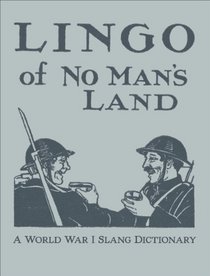Search -
Lingo of No Man's Land: A World War I Slang Dictionary
Lingo of No Man's Land A World War I Slang Dictionary
Author:
In 1915 Massachusetts native Lorenzo N. Smith, roused by the newspaper reports of desecrated Belgium and France, crossed the Canadian border and joined the Wesmount Rifles. After stints with the First Canadian Contingent at Ypres, Festubert, Givenchy, Ploegsteert, and Messines, where he was, according to the original foreword, struck by a piece ... more »
Author:
In 1915 Massachusetts native Lorenzo N. Smith, roused by the newspaper reports of desecrated Belgium and France, crossed the Canadian border and joined the Wesmount Rifles. After stints with the First Canadian Contingent at Ypres, Festubert, Givenchy, Ploegsteert, and Messines, where he was, according to the original foreword, struck by a piece ... more »
ISBN-13: 9780712357340
ISBN-10: 0712357343
Publication Date: 7/15/2014
Pages: 112
Rating: ?
ISBN-10: 0712357343
Publication Date: 7/15/2014
Pages: 112
Rating: ?
0 stars, based on 0 rating
Genres:




